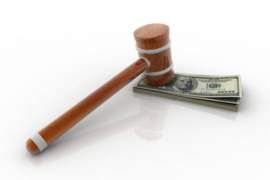
Chapter 13 Bankruptcy Information

Related Forms
Schedule B - Personal Property
Schedule C - Property Claimed as Exempt
Schedule D - Creditors Holding Secured Claims
Schedule E - Creditors Holding Unsecured Priority Claims
Schedule F - Creditors Holding Unsecured Nonpriority Claims
Schedule G - Executory Contracts and Unexpired Leases
Schedule I - Current Income of Individual Debtor(s)
Schedule J- Current Expenditures of Individual Debtor(s)
Summary of Schedules (Includes Statistical Summary of Certain Liabilities)
Order Discharging Debtor Before Completion of Chapter 13 Plan
Discharge of Debtor After Completion of Chapter 13 Plan
Order Confirming Chapter 13 Plan
Order Fixing Time to Object to Proposed Modification of Confirmed Chapter 13 Plan
Chapter 13 Debtor's Certifications Regarding Domestic Support Obligations and Section 522(q)
View All
Chapter 13 Bankruptcy Information: The Basics
Also referred to as a wage earner’s plan, a Chapter 13 Bankruptcy filing awards individuals—with regular income—the opportunity to construct a plan to repay their outstanding debts. Chapter 13 Bankruptcy Information states that a debtor will propose a repayment plan that will provide installment payments to creditors over the course of three to five years
Chapter 13 Bankruptcy Information: Rules and Regulations
To file under Chapter 13, a debtor must adhere to the rules latent in the United States’ Bankruptcy Code. Chapter 13 Bankruptcy information states preliminary rules, which inspect a debtor’s eligibility for filing; these requirements—which serve as a screening of sorts-- will either prevent or permit a debtor from the filing.
Before an individual files under Chapter 13, they must satisfy the following eligibility requirements:
• A Chapter 13 Bankruptcy commences when a debtor files a petition with the bankruptcy court that serves the area where the debtor lives
• To formally engage the filing under Chapter 13, the debtor must submit the following documents with their respective bankruptcy court:
o A list of all the debtor’s assets and liabilities
o A schedule of the debtor’s expenditures and current income
o A schedule of the debtor’s executory contracts and unexpired leases
o A list of financial affairs
o The debtor must file a certificate that affirms the individual’s participation in a credit counseling program. If the individual—through the help of a licensed credit agent—created a debt repayment plan, the plan must be submitted to the court.
o The debtor must file a statement of his/her monthly net income and any anticipated fluctuations relating to income or expenses that may occur once the filing is in process.
o The debtor’s most recent tax return
After this information is submitted, Chapter 13 Bankruptcy information requires the payment of court and administration fees—these fees will total $274.00.In order to satisfy the requirements surrounding a Chapter 13 filing, the debtor must complete the court-delivered Bankruptcy Forms. These forms will ask for certain variables attached to the individual’s debt portfolio, including the amount, frequency and source of the individual’s income and a list all property owned by the debtor.
Chapter 13 Bankruptcy information also state that the debtor must list all of his or her property monthly expenses, including expenses associated with the purchase of clothing, utilities, taxes, housing transportation, food etc.
Married couples are required—according to Chapter 13 Bankruptcy information—to deliver this information for their spouse regardless of whether they are filing individual or joint petitions.
NEXT: Bankruptcy Fraud




















